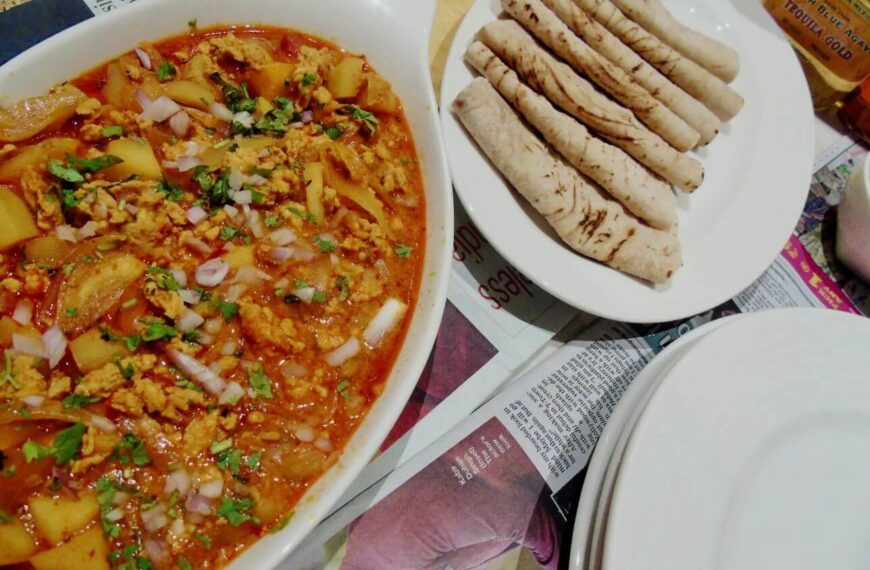Lily went in an auto-rickshaw to teach in Kathua town. The ride was long but she enjoyed the young vibrant faces of the college students. Militancy was rearing its monstrous head again and again. Ravishing Kashmiri beauties poured in from the higher reaches of the state with their frightened families. It was devastating to see their plight. The sing song melodious sound of the Dogri and Pahari dialects mingled with Kashmiri conversations in the corridors. The Pakistan border was very close from here. Terror was being unleashed, therefore, strict vigil was kept by our regiments to guard against attacks. Through all the fearsome night duties of the men folk, we managed to listen to excellent music from the neighbouring country. This came in cassettes smuggled across the borders, which we played on our two-in- one machines. The author speaks of the trail and tribulations of being stationed in Janglote, in District Kathua, in the weekly column, exclusively for Different Truths.
 After years of staying far away from home, we came closer than ever to my hometown Chandigarh. The regiment was stationed in a small field area, Janglote, in District Kathua of Jammu and Kashmir. It was on the highway to Jammu and not too far from Pathankot .The town of Kathua was right across the highway from the Cantonment where we lived. Since it was a field area, accommodation was scarce. We lived in the officers’ mess till a temporary accommodation fell vacant. This time it was a Basha with a huge banyan tree shading it. The hollow trunk was the nesting place of birds and snakes alike. The brilliant flame of the forest, also a native of that area, grew in the yard. The deep crimson flowers grew like flickering tongues of flames on a dark almost leafless branch of the tree. Known as tesu in the local language it was a natural dye and colour for herbal tints. We would soak the flowers overnight to make a pretty orange shade of colour to spray on each other during the festival of Holi.
After years of staying far away from home, we came closer than ever to my hometown Chandigarh. The regiment was stationed in a small field area, Janglote, in District Kathua of Jammu and Kashmir. It was on the highway to Jammu and not too far from Pathankot .The town of Kathua was right across the highway from the Cantonment where we lived. Since it was a field area, accommodation was scarce. We lived in the officers’ mess till a temporary accommodation fell vacant. This time it was a Basha with a huge banyan tree shading it. The hollow trunk was the nesting place of birds and snakes alike. The brilliant flame of the forest, also a native of that area, grew in the yard. The deep crimson flowers grew like flickering tongues of flames on a dark almost leafless branch of the tree. Known as tesu in the local language it was a natural dye and colour for herbal tints. We would soak the flowers overnight to make a pretty orange shade of colour to spray on each other during the festival of Holi.
I used to go in an auto-rickshaw to teach in Kathua town. The ride was long but I enjoyed the young vibrant faces of the college students I taught. Militancy was rearing its monstrous head again and again. Ravishing Kashmiri beauties poured in from the higher reaches of the state with their frightened families. It was devastating to see their plight. The sing song melodious sound of the Dogri and Pahari dialects mingled with Kashmiri conversations in the corridors.
The Pakistan border was very close from here. Terror was being unleashed, therefore, strict vigil was kept by our regiments to guard against attacks. Through all the fearsome night duties of the men folk, we managed to listen to excellent music from the neighbouring country. This came in cassettes smuggled  across the borders, which we played on our two-in-one machines. My fondest and most nostalgic memories are of the moony sad voice of Ataullah Khan singing love songs. He sang in Saraiki, his mother tongue, as well as in Urdu and Punjabi. A few last minutes of my English class were devoted to a mellifluous-voiced boy, who would sing the latest folk songs and ghazals of this singer for the whole class. I also have memories of buying black velvet jackets with gold work on them which the Bhangra groups wore in Pakistan. They were easily available in the narrow bazaars of Kathua leading me to believe that smuggling across the borders must have been rampant.
across the borders, which we played on our two-in-one machines. My fondest and most nostalgic memories are of the moony sad voice of Ataullah Khan singing love songs. He sang in Saraiki, his mother tongue, as well as in Urdu and Punjabi. A few last minutes of my English class were devoted to a mellifluous-voiced boy, who would sing the latest folk songs and ghazals of this singer for the whole class. I also have memories of buying black velvet jackets with gold work on them which the Bhangra groups wore in Pakistan. They were easily available in the narrow bazaars of Kathua leading me to believe that smuggling across the borders must have been rampant.
The maid, who came to help me with house work, was from the Gujjar tribe. Gujjars are basically a nomadic tribe, who move down from the higher mountains during winters in order to graze their sheep and goats. Also called Gurjars, they are an ethnic group, which is pastoral and agricultural. They follow Hindu, Islam or Sikh religion but they speak their own language called Gujari. Their origin had an interesting theory that takes their roots to Mount Abu in Rajasthan. The scholar Baijnath Puri says the ancient Arbuda Mountain was their abode in the medieval times. They spread across Rajasthan and Gujarat and ruled in the pre-Mughal era, migrating as early as 6 th century AD. The word is the combination of ‘gur’ meaning enemy and ‘ujjjar’ meaning destroyer. They were at some time in parts of Afghanistan too. Gujjars are in the other backward tribe category in some states though in Himachal Pradesh and parts of Jammu and Kashmir they are in the scheduled tribe category.
Handsome men with hennaed beards, they keep aloof looking after their livestock. The maid, who helped me was named Vaishni. She was hardy and industrious. I think of her with fondness and affection. She would hum a mountain song as she washed the clothes in the yard under a rickety tap.
One of my prized possessions those days was a set of three miniature Basohli paintings that I commissioned a painter in the school of Basohli painting to paint for me. It is named after a small princely hill town not far from Janglote, which was the cradle of this style of painting.
It later blossomed further as the prolific Kangra School of painting. Imaginative, vigorous and bold style characterised by huge prominent eyes, and large receding foreheads. I fell in love with the intricate lines and the vivid primary colours and backgrounds of ochre yellow, brown and green. Theirs was a unique technique of depicting jewellery with raised white drops of paint. I believe the particles of the wings of green beetles were used to portray emeralds. The Devi series depicting manifestations of the goddess are exquisite as are the artists Devdas’ illustrations of the Rasamanjari, under the patronage of Raja Kirpal Chand.
Basohli also supposed to be the origin of the 1730 Geet Govind. Rich enamel colours were used to show opulent costumes. This school of paintings seems to be a blend of Mughal miniature, Hindu mythology and folk art of the hills. My paintings are safe in my daughter’s home in the United States and are a reminder of those days.
Our son was still a toddler playing around in the muddy courtyard but our daughter went far to be dragged out of bed at an unearthly five o clock in order to rush to catch the modified truck that was a school bus with make shift wooden benches placed inside. I had to hastily help her dress up in her uniform, braid her really long hair, bully the milk down her protesting throat, and make two lunch boxes for breakfast and lunch. She came home only around tea time, at times munching on a partially ripe guava! It pained me to see her travel so far while she was so small. Well that is why army kids are tough and strong. Nothing at all can ruffle their feathers.
This posting meant taking friends and family on the pilgrimage to the Vaishnov Devi temple. It is on a hill top near Katra and is highly revered. It is on every ones wish list to pay obeisance here at least once in a lifetime. This temple is dedicated to the manifestation of the Hindu mother goddess Mahalakshmi. The trek up the hill or the pony ride are invigorating. Some celebrities prefer going by helicopter too. People go with devotion and believe that their wishes are fulfilled here. You can spot a devotee by the red scarf with gold ribbon edging which they tie on their heads as well as on their vehicles. It’s more of a tourist hub now.
No place is fun until one finds some interesting eateries! Since we were right on the highway, we only had to drive out of the Cantonment gates and a dhabha (a road side eatery) was right there! The heavenly aroma of fresh whole wheat bread rotis being baked in a dug out mud oven called tandoor wafted around the senses as we gorged and pigged on butter laced black lentils and tandoori chicken! We also discovered an interesting street shop that made spicy chicken Tak-a-Tak on an iron griddle, a large tawa, making the typical sound with the ladle and knife that could be heard many streets away, as he clanged away with style.
This episode will not be complete without narrating the horrifying sighting of a monitor lizard creeping up on my mud kitchen wall. It was the kind armies used to scale walls of forts. It seemed like a baby crocodile to my bewildered eyes. I hastily picked up my baby boy and gingerly switched off the cooking gas and fled for my life! We did live in jungles, my friends. And the forest invaded us!
©Lily Swarn
Pix from the net.








 By
By

 By
By